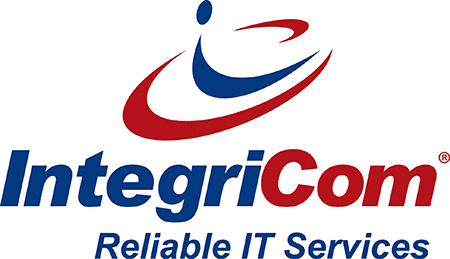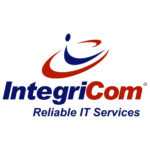Effective communication is the backbone of any successful business, influencing customer satisfaction, team efficiency, and overall performance. Modern technology now allows companies to connect their communication tools seamlessly, creating faster and more efficient interactions. This integration not only simplifies processes but also improves responsiveness and decision-making. It helps teams work together effortlessly while reducing operational costs. In this blog, we’ll explore the key advantages of telephony integration and how it can strengthen your communication systems.
Key Takeaways
- Telephony integration enhances customer interactions by providing support agents with instant access to customer histories, leading to personalized responses and improved satisfaction.
- VoIP integration offers significant cost savings and scalability, allowing businesses to reduce communication expenses while adapting their telephony systems to meet evolving needs.
- Real-time analytics and seamless CRM integration enhance operational efficiency and decision-making, providing valuable insights that drive customer satisfaction and business growth.
Streamlined Customer Interactions

One of the standout benefits of telephony integration is the ability to streamline customer interactions. Imagine your support agents having instant access to a customer’s history, enabling them to personalize responses and resolve issues swiftly. This is the magic of computer telephony integration (CTI), which provides agents with easy access to previous interactions, helping them tailor their conversations effectively.
Real-time updates are a game-changer in enhancing customer interactions. Support agents can handle calls with confidence, knowing they have the latest information at their fingertips on the computer screen. The screen pop feature, which:
- Displays complete information about the caller as soon as the call connects
- Significantly reduces response time
- Improves the quality of customer interactions
Advanced call routing ensures that calls are directed to the most capable agent based on their expertise, leading to faster resolution and higher customer satisfaction. This intelligent call routing not only improves the customer experience but also boosts operational efficiency. A CTI provider boosts both agent efficiency and customer satisfaction by reducing the time agents spend switching between apps.
Ultimately, these features contribute to a superior customer service experience. With reduced hold times and personalized responses, customers feel valued and understood. This, in turn, leads to improved customer satisfaction scores and a positive customer experience, which are vital for any business aiming to build long-term relationships with its clients.
Boosted Productivity and Efficiency
Telephony integration doesn’t just benefit customer interactions; it also significantly boosts productivity and efficiency within your organization. Telephony integration automates routine processes, enabling employees to concentrate on more critical tasks, thus improving overall productivity. For instance, features like automated dialing and one-click dialing enable sales and support teams to make faster outbound calls, ensuring better task prioritization.
Integrated systems also reduce caller wait times through features like interactive voice response (IVR) and queue-based routing. This not only enhances the customer experience but also allows agents to handle more calls within the same time frame, contributing to overall productivity. The combination of an existing CRM system, cloud telephony, and phone system automates tasks, saving agents significant time that can be better utilized for customer engagement.
Data and reporting computer software provide valuable insights into call center activity, allowing for informed decision-making. Tracking call metrics like missed calls, waiting times, and team performance helps businesses improve call center efficiency. These insights help in accessing data to identify areas for improvement, ensuring that your team is always performing at its best, and providing superior customer service through call monitoring and call logging.
Enhanced Team Collaboration
Telephony integration also plays a pivotal role in enhancing team collaboration. Unified communications through telephony integration help streamline workflows and reduce the time spent on managing multiple communication channels. This seamless integration allows teams to transition smoothly from individual calls to group conferences, fostering collaborative discussions and improving overall team efficiency.
Integrating telephony tools and the right business tools within platforms like Microsoft Teams enhances communication flexibility among team members, allowing them to work effectively from various locations. Features like shared mailboxes and contact lists foster better resource management within teams, ensuring that everyone has access to the information they need to perform their tasks efficiently.
Mobility support is another significant benefit, as it allows team members to collaborate across devices, ensuring that they can connect on their preferred hardware. Monitoring agent performance through integrated analytics helps identify training needs and productivity levels, ensuring that your team is always at the top of its game.
These features collectively contribute to improving customer satisfaction by ensuring that your team can work together seamlessly to deliver superior customer service.
Cost Savings with VoIP Integration

Switching to VoIP (Voice over Internet Protocol) can lead to substantial cost savings for businesses by:
- Minimizing the need for costly traditional phone lines
- Reducing overall hardware requirements
- Reducing communication costs by 30-50%
- Saving as much as 90% on international calling expenses with VoIP services
This makes VoIP a financially efficient choice for global businesses.
VoIP offers several benefits:
- Predictable billing, which becomes beneficial as businesses expand and grow.
- Predictability in costs allows for better financial planning and management.
- Enables organizations to utilize their existing devices, avoiding the need for new hardware purchases.
- Seamless integration with existing infrastructure, further contributing to cost savings.
Overall, integrating VoIP services results in significant financial efficiency for businesses. VoIP eliminates the need for physical phones and reduces hardware costs, allowing businesses to allocate resources more effectively. This cost-saving aspect makes VoIP an attractive option for businesses looking to optimize their communication systems without breaking the bank.
Scalability for Growing Businesses
As businesses grow, their communication needs evolve. Scalability is a crucial feature of telephony integration, allowing systems to grow seamlessly with expanding needs without major disruptions. VoIP technology enables businesses to easily add new users and accommodate increased call volumes without substantial costs, ensuring that communication systems can scale efficiently.
Telephony integration services can adapt to a business’s growth by allowing management to add or remove users and features as required. This flexibility ensures that businesses can scale their operations according to their business needs, whether they are small startups or large enterprises. The ability to scale communication systems effortlessly is vital for maintaining operational efficiency and improving customer satisfaction.
Scalability in telephony integration services ensures businesses can maintain excellent customer service as they expand. This adaptability is essential for staying competitive in today’s fast-paced market, where customer expectations are continually rising. Scalability allows businesses to meet these expectations without compromising the quality of their service.
Real-Time Analytics and Reporting
Real-time analytics and reporting are invaluable tools provided by telephony integration systems. These analytics offer crucial insights into call duration, volume, response times, and customer satisfaction scores, enabling businesses to monitor call handling efficiency and ensure quality service. Utilizing real-time data allows organizations to streamline responses to customer calls, thus enhancing overall workflow.
The ability to analyze real-time data helps businesses pinpoint inefficiencies in their communication processes, facilitating prompt corrective actions. Continuous monitoring and analysis of the CTI system data allow businesses to identify areas for improvement, ensuring that their communication strategies are always optimized. This immediate identification of performance issues is crucial for maintaining high standards of customer service.
Analytics from integrated telephony and CRM systems provide insights into customer behavior, aiding in better lead management and data-driven decisions. By tracking metrics such as customer satisfaction, businesses gain visibility into service quality and areas for enhancement. These insights are essential for making informed decisions that drive business growth and improve customer satisfaction.
Improved Security and Compliance
In today’s digital age, security and compliance are paramount. Telephony integration systems support compliance with regulations like GDPR and HIPAA by ensuring secure data storage and providing audit trails. These systems often include features like secure call recording to enhance data protection, ensuring that sensitive customer information is safeguarded against unauthorized access.
Advanced telephony integration services utilize encryption and security protocols to safeguard communications. Regular security audits are a recommended practice for ensuring ongoing compliance and protection in telephony integration.
Maintaining robust security features not only protects sensitive customer information but also enhances customer trust. Ensuring data security helps businesses build stronger customer relationships, resulting in greater satisfaction and loyalty. This focus on security and compliance is crucial for any business aiming to provide superior customer service.
Seamless CRM Integration

Integrating telephony with Customer Relationship Management (CRM) systems offers numerous benefits:
- Enables tracking of various customer interactions like calls and emails, creating a comprehensive view of the customer journey.
- Allows agents to swiftly access customer account details, improving interaction efficiency.
- Ensures that customers receive personalized service.
Real-time reporting integrates with CRM systems to provide a comprehensive view of customer interactions. This integration offers several benefits:
- Agents can automatically log calls and update customer records in real-time, enhancing follow-up efficiency and customer satisfaction.
- The ability to set appointments directly during calls improves service efficiency.
- Ensures that customers receive timely responses.
Effective call routing based on agent expertise is another significant benefit of CRM integration. This intelligent call routing improves customer experience and sales potential by ensuring that customers are connected to the most capable agent. Overall, seamless CRM integration enhances customer satisfaction by providing a holistic view of customer interactions and ensuring that agents can deliver excellent customer service.
Remote Work Capabilities

In today’s dynamic work environment, remote work capabilities are essential. Telephony integration enables employees to manage calls and access customer data from any location, using any device. Cloud-based telephony systems allow agents to manage calls from any location, enhancing flexibility and ensuring that business operations can continue seamlessly.
With telephony integration, businesses can:
- Deploy virtual call centers, making remote work more viable.
- Reduce operational costs.
- Enable a remote work culture, leading to improved employee satisfaction and retention.
- Allow agents to access customer information in real-time, irrespective of their working environment.
This ensures that agents can provide consistent and high-quality service.
The ability to manage phone calls and access data remotely is crucial for maintaining business communications continuity in today’s fast-paced market. Remote work capabilities facilitated by telephony integration ensure that employees can work effectively from anywhere, leading to a more flexible and resilient business operation.
Future-Proofing with Advanced Technologies

As technology continues to evolve, future-proofing your business is essential. Telephony integration services are evolving to include advanced capabilities that ensure businesses can adapt and thrive amidst rapid technological changes. AI-driven technologies, for instance, are expected to automate 10% of customer interactions by 2026, streamlining operations and enhancing customer experience.
Predictive dialing, AI-driven virtual assistants, and sentiment analysis are key features being integrated into telephony systems. These technologies optimize outbound communication and enhance agent productivity and efficiency. The cloud-based contact center market is projected to grow significantly, offering greater flexibility and scalability for businesses.
Speech analytics combined with sentiment analysis allows agents to gauge customer emotions in real-time, enhancing the customer interaction experience. Real-time AI assistance and intelligent call routing are also being integrated to optimize interactions. Adopting these advanced technologies helps businesses future-proof their operations and stay competitive in the rapidly changing market.
Driving Better Communication Through Telephony Integration
Integrating telephony with your existing communication systems creates a seamless, efficient, and cost-effective workflow that strengthens both internal collaboration and customer engagement. By streamlining calls, enhancing productivity, and centralizing communication tools, businesses can respond faster, make better decisions, and deliver a consistently positive experience. This approach not only boosts efficiency but also lays the groundwork for scalable, future-ready communication.
At IntegriCom, we provide tailored solutions for businesses seeking reliable business phone service in Atlanta that maximizes efficiency and improves client interactions. Our expertise in telephony integration ensures you get a communication system that works seamlessly for your operations. Partner with us to transform your business communication into a streamlined, high-performing asset.
Frequently Asked Questions
What is telephony integration?
Telephony integration, or computer telephony integration (CTI), connects traditional phone systems with modern computer systems, enhancing communication and optimizing business processes. This approach streamlines operations and boosts efficiency within organizations.
How does telephony integration improve customer interactions?
Telephony integration significantly enhances customer interactions by equipping agents with immediate access to customer history and real-time updates, leading to personalized responses and faster issue resolution. This results in improved customer satisfaction and overall experience.
What are the cost-saving benefits of VoIP integration?
VoIP integration can save you 30-50% on communication costs while eliminating the need for traditional phone lines, resulting in predictable billing and enhanced financial efficiency. This makes it a smart choice for businesses looking to reduce expenses.
How does telephony integration support remote work?
Telephony integration significantly enhances remote work by allowing employees to manage calls and access customer data from any device, promoting flexibility and efficiency. This capability ensures seamless communication and collaboration, which are essential for remote teams.
What advanced technologies are being integrated into telephony systems?
Telephony systems are increasingly incorporating advanced technologies like AI-driven virtual assistants, predictive dialing, sentiment analysis, and real-time AI assistance to enhance customer interactions and optimize experiences. This integration not only improves efficiency but also elevates the overall quality of communication.


